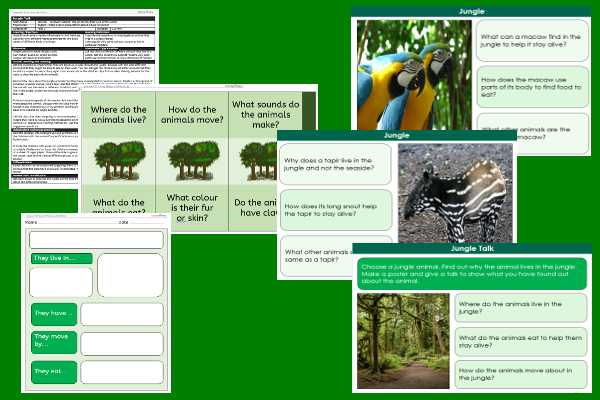Lesson Six – Jungle Talk

This science teaching pack for Key Stage One gets the children to conduct and record research into a special type of animal that can be found living in a jungle habitat to show their appearance, habits and movements.
The class can devise and produce posters to explain why and how a specific animal makes their home in a jungle such as close to food sources and materials for shelter and protection.
Download this teaching pack including a lesson plan, classroom activities and an interactive presentation to conduct and record research into a special type of animal that can be found living in a jungle habitat to show their appearance, habits and movements
Activities in this teaching pack include a table display card to collect and record information about a type of jungle animal using key questions and a template to organise and present collected information about a type of animal that lives in a jungle habitat.
The interactive presentation can be used to explore and record research into a special type of animal that lives in a jungle habitat.
This lesson is part of a science scheme of work to get the children to identify, describe and compare some of the different animals that can be found living in a jungle habitat including in the tree canopy and undergrowth. There are teaching activities for shared learning, differentiated worksheets to support independent learning and interactive presentations to introduce concepts and key skills.
-

Garden Numbers
Identify and model some of the different calculation techniques that can be used when adding pairs of single digit numbers
-

Summer Stories
Practise composing and presenting narrative stories with familiar settings to illustrate the events and experiences that could happen during the summer
-

Fraction Numbers
Investigate how to use concrete equipment, diagrams and calculations to identify and record the matching fractions of different numbers
-

Family Holiday Lists
Explore how to compile sentences punctuated using commas to list some of the special things that families can use, complete and experience on a holiday
